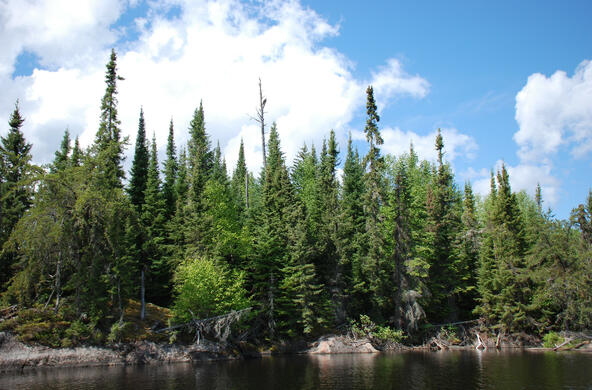Twenty-two years: that's how long we have before the current pace of climate change will cause irreversible destruction to the environment we depend on for food, water and breathable air, according to a recently published landmark United Nations scientific panel report.
The sobering analysis -- conducted by 91 scientists from 40 countries -- found that the threshold for a temperature increase that would cause such destruction is 2.7 degrees Fahrenheit, not the previously estimated 3.6 degrees. Meanwhile, the Trump administration is aggressively turning back the clock on policies meant to curb greenhouse gas emissions. Their fast-paced deregulation is the equivalent of playing Russian roulette with nature, and we humans are likely to be the losers.
It was concerning enough that the United States pulled out of the Paris Agreement last year, showing a dangerous disregard for the overwhelming evidence that greenhouse gas emissions need to be reduced. But the hurtful rollbacks did not stop there. Just recently the Environmental Protection Agency announced plans to combine the Office of the Science Advisor with its research arm -- a move that threatens to further diminish the role of science in informing environmental policy.
In August, the EPA drafted rules that would weaken fuel efficiency and carbon dioxide emissions standards for vehicles. And in September, the agency released a proposal relaxing the requirements for oil and gas companies to monitor and repair methane leaks.
Here is what is so alarming. Until now, nature has done a pretty astounding job of absorbing the greenhouse gases that we have been pouring into our atmosphere over the last 150 years. But a growing body of research shows that we may well be running out of miracles.
Banning plastic straws is a little like spitting in the wind
Recently, my colleagues and I at the Advanced Science Research Center at The Graduate Center of The City University of New York published evidence showing that increased precipitation brought on by climate change is making forest soil wetter and reducing its ability to absorb methane from the atmosphere.
Additional studies show that global warming and other man-made environmental changes are causing natural sources of methane trapped beneath lake sediments, wetlands, and Arctic permafrost to be released into the atmosphere.
Clearly, we have reached the point where it is no longer simply an issue of exhausting nature's capacity to absorb our pollution. Now we must grapple with the knowledge that our continued emissions will spur a cause-and-effect loop that will accelerate the rate of climate change.
The urgent recognition of nature's limitations to offset our damage to the planet should motivate policymakers to increase regulations on greenhouse gas emissions, not roll them back.
Trump's failure to fight climate change is a crime against humanity
This perilous backtracking is happening despite the fast-growing effects of climate change. Worldwide, our weather events are more intense and destructive, our seasons are less predictable, and the threats to our communities, property and food supplies are growing.
Fortunately, many states seem determined to force the federal government to live up to its responsibilities. For example, 17 states and the District of Columbia are suing the federal government over its decision to peel back stricter vehicle emissions standards.
But the work of our state and local governments has to go much deeper if we are going to stay the effects of climate change. Given our federal leaders' determination to ignore this crisis, it's time for states, cities and municipalities to partner with local university researchers to create robust plans that address the holistic aims of climate health and the needs of residents. By focusing their efforts on emission-reduction goals with relatively simple solutions, states can realize significant environmental and economic benefits.
A recent analysis commissioned by the Environmental Defense Fund, for example, suggests cost-effective ways for state and local governments to reduce emissions of methane from natural gas extraction and transport by using currently available technologies and operating practices. Such practices reduce the environmental impact of these activities and save companies money by reducing loss of valuable methane.
We already have examples of how some states are moving aggressively toward this type of simple, yet effective environmental stewardship. California legislators recently voted to require that 100 percent of the state's electricity come from carbon-free sources by 2045. And New York decided to leave the methane that could be extracted using new hydraulic fracturing techniques in the ground while also pledging to reduce greenhouse gas emissions by 40 percent by 2030. It is important to note that these states are largely focusing their efforts on reducing waste and improving efficiency -- actions that are relatively easy and economical.
These efforts, which include reducing leaks from methane extraction and curbing vehicle emissions, are inherently local or site-specific activities. The examples set by states like California and New York highlight the potential power of state and local governments to make a positive difference in the face of a federal administration that refuses to do so. Science is showing us that we have exhausted nature's miracles. Now it's time for humans to take responsibility and action.






